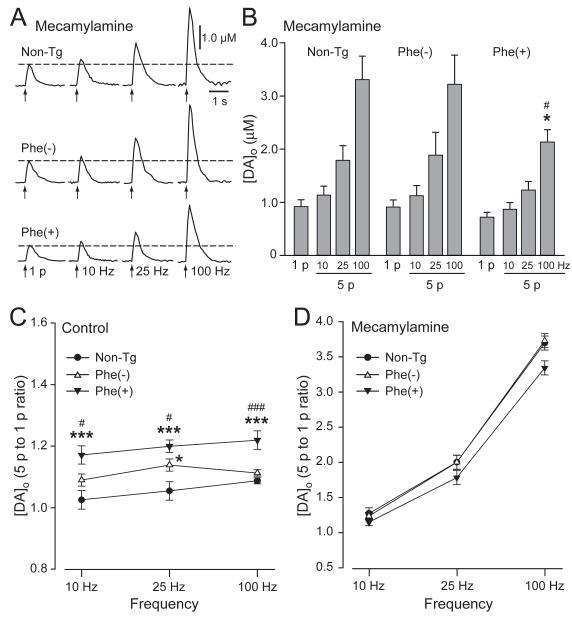Fig. 4. Differences in phasic versus tonic DA release between Phe(+) and non-Tg or Phe(−) mice are lost when nAChRs are blocked.
A. Representative 1 p and 5 p evoked [DA]o recorded in striatal slices from non-Tg, Phe(−) and Phe(+) mice in the presence of mecamylamine (10 μM), an antagonist of nAChRs. B. Mean 1 p or 5 p evoked [DA]o in mecamylamine in each group of mice (*p < 0.05 vs. non-Tg mice; #p < 0.05 Phe(−) vs. Phe(+); n = 17-22 per group). C. Ratio of 5 p to 1 p evoked [DA]o under control conditions showing enhanced sensitivity to phasic simulation in Phe(+) mice (*p < 0.05, ***p < 0.001 vs. non-Tg mice; #p < 0.05, ###p < 0.001 vs. Phe(−) mice (n = 17-22). D. Differences among the three groups were lost in mecamylamine (p > 0.05 for all comparisons; two-way ANOVA).

